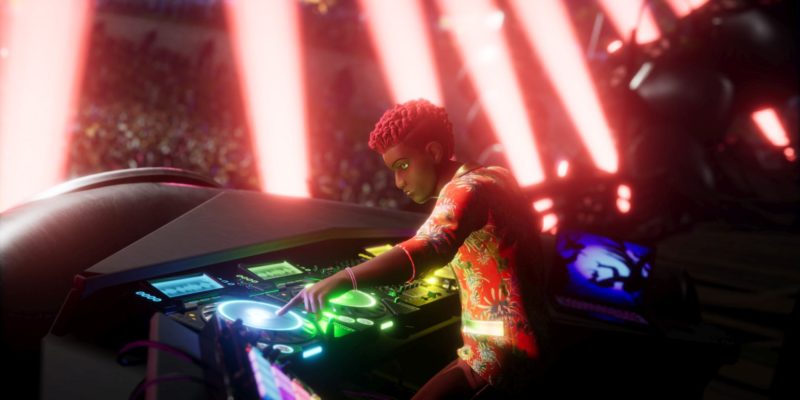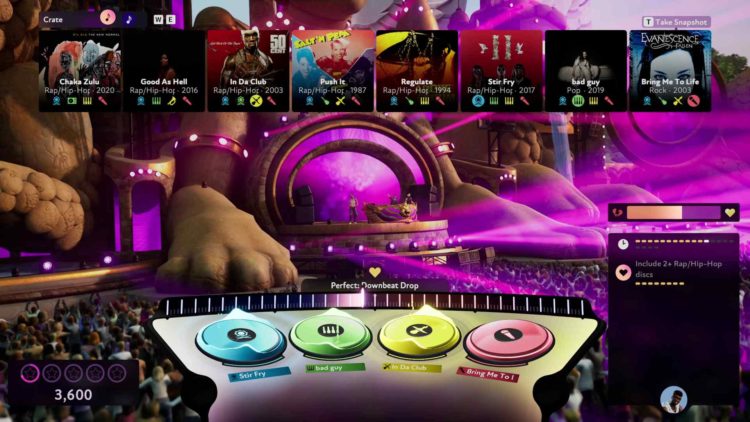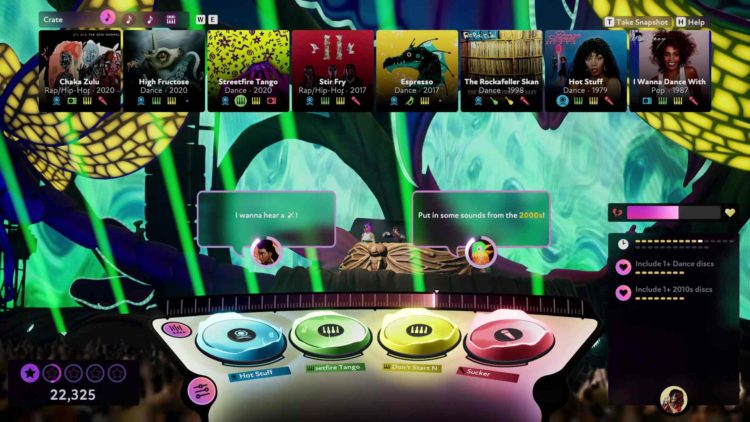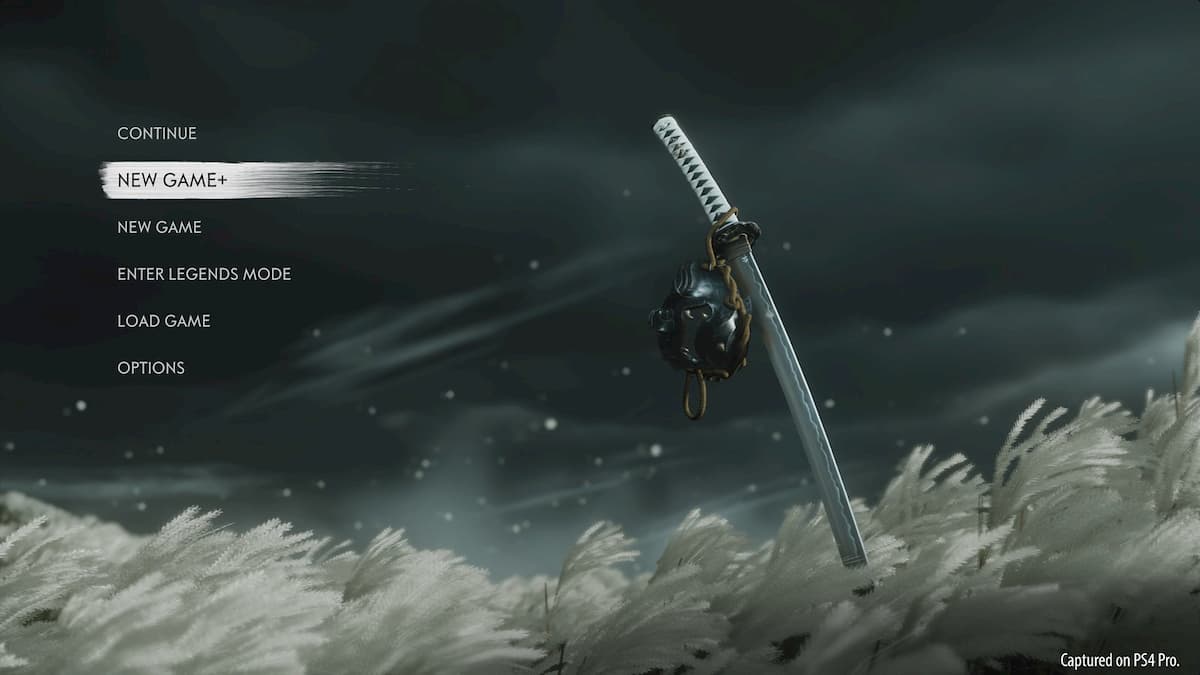
In Fuser, music game maker Harmonix drops players in front of mixing decks and lets their creativity run free. Featuring over 100 songs from a range of artists and genres, players are challenged to mash together and modify unique mixes. If you’ve ever wondered how tracks from country, hip-hop, and pop songs sound when mashed together, you can find out in this game. Spoiler: the answer is “shockingly well.”
In Fuser’s campaign, you’re an up-and-coming DJ at the Fuser music festival. You’ll quickly make a name for yourself by playing across five different stages, each comprised of six shows that take place at different times of the day. You start by helping to energize the morning crowd and end with putting on a late-night fireworks and special effects display to light up your mixes. Along the way, you’ll meet a host of characters who will show you the ropes and challenge you with various requests as you unlock new songs, custom instruments, and sound effects.
Breaking down Fuser
The game’s interface is deceptively straightforward. You’re presented with a four-track mixing deck from which to make your musical masterpieces. Your music collection is arranged across the top of the screen with hits such as bad guy by Billie Eilish, Don’t Start Now by Dua Lipa, and Temperature by Sean Paul. The collection covers a variety of genres that range from dance, to rock, hip-hop, Latin, and more. It’s comprised of both modern songs and ones that date back to the ’70s.
You can pack up to 24 looping song clips in your crate, although a handful are assigned to you in the campaign mode. Each is divided into color-coded instruments, with blue for percussion, green for rhythm, yellow for lead, and red for vocals. Using the keyboard, mouse, or gamepad, you can drop these individual instruments – represented as discs – onto your mixing deck.
There’s nothing quite like the thrill of building up a song and deciding when each instrument gets dropped down. I could feel the energy of the music building up in me as I was starting up. The trick is, you have to do everything according to the downbeat or pick-up notes, which are shown on a timing bar across the top of your mixing deck and under each song. This fundamental principle may be difficult to master at first for rhythmically challenged people like myself. But even though I still had more than my fair share of mistakes, I was quickly able to increase my average of perfect drops. Although, I did occasionally encounter a bug where the game didn’t respond to my mouse clicks, which sometimes cost me a challenge or ended up making me click again out of habit and dropping an off-beat track.

It took some practice, but I was soon dropping beats like a pro.
Once you have a song going, it’s largely a matter of keeping the mix fresh by continually dropping new discs onto your deck to keep the audience from getting bored. As expected, things start off casually and soon escalate as concert promoters and audiences start making requests. Promoter requests usually involve specific songs or genres, such as having both a rock and a country song playing. They soon evolve into more demanding challenges though that include having only one or two discs play, custom instruments and audio effects, or playing a specific track from a song. Audiences usually come in pairs, which can sometimes be fulfilled by finding a song that fulfills both criteria.
Some of the challenges can grow a bit tiresome. For instance, one promoter was particularly fixated on using the vocals from Ace of Base’s The Sign, which forced me to keep going back to it despite having grown tired of it. Then there’s the matter of locating a specific song or instrument in time to fulfill requests while dropping a disc on the downbeat before time runs out. Players can ignore requests and challenges, which doesn’t necessarily take away points, but they’ll lose out on their bonuses at the end of the set.

Do a dance to get the crowd warmed up.
Mad multitasking
Fuser escalates the challenge as your collection of musical tools grows. Later in the campaign, you can have multiples of the same instruments on your deck to combine vocals and lead guitar riffs from different songs together. You can eject, highlight, mute, and fade tracks in and out. Eventually, you’ll unlock custom instruments and audio effects to play during a concert in addition to changing up the tempo and other variables.

Audiences and promoters can get quite bossy.
These advanced tools require some practice, but the game allows you to fake your way through. For instance, I created music loops by randomly tapping on keys on the instrument panel and they still came out sounding surprisingly good. Harmonix gets big credit for helping to prevent most mixes from turning into ear-piercing cacophonies. But while you’re learning to use these tools, demands come flying in and there’s not much time to react to them. The game doesn’t pause when new instructions pop up, so the audience is continually getting bored while you’re reading about how to use the synth drums. Replaying levels, practicing in Freestyle mode, and turning on no fail can help a lot, but Fuser’s campaign can become an incredibly overwhelming experience that pushes you to throw on any disc and change the pitch just to appease the crowd or promoters. Knowing your song crate inside and out is critical to getting a high score to unlock additional content. This unintentionally encouraged me to stick with the same songs for each set.
The virtual audience will love what you play no matter what, so long as it’s played with perfect timing. Requests in the campaign will always be limited to the pre-designated selection or what you have in your crate. There’s not much reason to be thoughtful about the music you pack for the campaign other than to add a bit of personality and variety. It also helps to stick with songs that you know well instead of having the game autofill your crate, but it’s also easy to just stick with the required music instead of having to flip back-and-forth between parts of your crate. However, doing this causes the game to feel a little mechanical after a while. Also, it gets a little tiresome as the player to stick with the same music clips.

Fortunately, the Freestyle mode and cross-platform multiplayer encourages players to be more personal and creative. There’s a cooperative multiplayer mode where players take turns as the mixer and a battle mode where players go head-to-head to control the mix. I wasn’t able to play either, but I was content with the single-player Freestyle, which ended up being my favorite mode. With it, I was free to experiment with mixes without the pressures of requests or time limits. I might have ended up skipping the campaign altogether if I didn’t need to unlock songs, instruments, effects, and character and stage customizations.
Music sharing
Fuser’s social system needs to be filled out with content, but it allows players to record clips of their performances to share with other players. Players can also take quick snapshots from whatever is being played, whether as the ones playing it or watching it. These snapshots record the discs that are being played alongside all of the settings and custom instruments and can be added to your crate alongside your songs to be used in your mixes. It’s a wonderful way to capture unintentional strokes of genius and incorporate fantastic sounding creations in your mixes.
In essence, Fuser is a huge love letter to music, and I can’t help loving it despite some of the extreme multitasking that the campaign demands. Similar to Rock Band 4, the game is remarkably easy to get into and allows practically anyone to make music without actually knowing how to use fancy audio equipment. I often find myself loading it up to relax in Freestyle mode and watch recorded performances. It’s certainly worth checking out.
It takes some practice and deep breathing exercises, but getting into Fuser’s rhythm is worth the effort. You can become a pro DJ without really knowing what you’re doing.







More Stories
Doom Eternal review
Review: The Last of Us Part II complicates the idea of right and wrong
Dirt 5 review